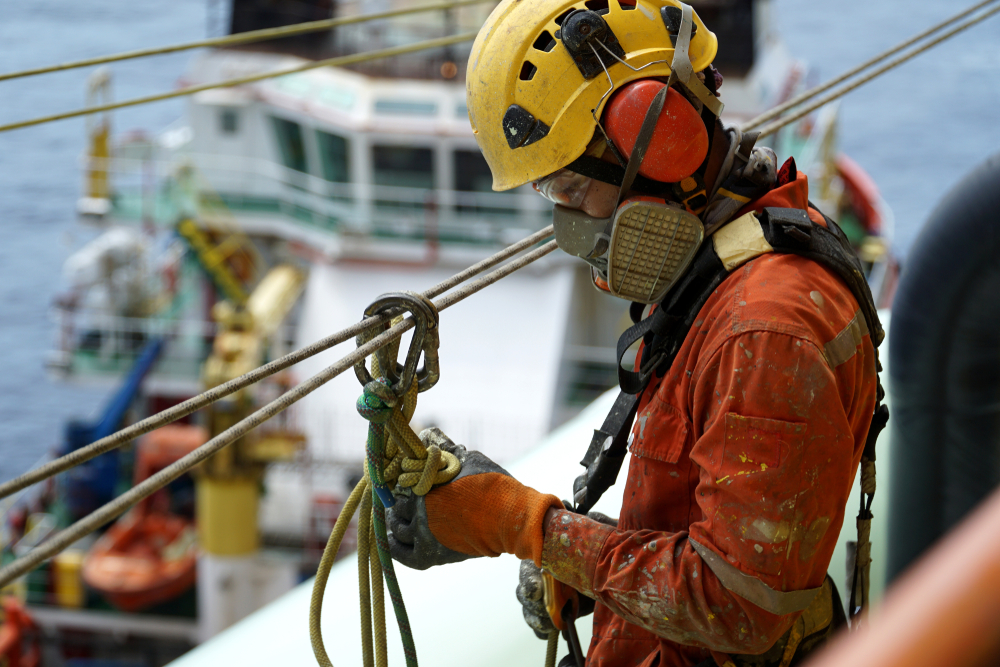Personal Protective Equipment (PPE)
LEASON 3: Personal Protective Equipment (PPE)
Personal Protective Equipment (PPE) refers to specialized clothing, equipment, and gear that individuals use to protect themselves from various workplace hazards and safety risks. PPE is an essential component of workplace safety and is designed to minimize the risk of injury, illness, or exposure to harmful agents. Here’s an overview of PPE, its types, and its importance:

Types of Personal Protective Equipment (PPE):
- Head Protection:
- Hard Hats: Protect the head from falling objects, electrical shocks, and impacts in construction, industrial, and hazardous environments.
- Eye and Face Protection:
- Safety Glasses: Shield the eyes from dust, debris, and flying particles.
- Safety Goggles: Provide additional protection against chemical splashes, vapors, and potentially harmful substances.
- Face Shields: Cover the entire face, offering protection from splashes, sparks, and high-velocity impact.
- Hearing Protection:
- Earplugs: Inserted into the ear canal to reduce noise exposure in loud environments.
- Earmuffs: Cover the entire ear to provide hearing protection against high noise levels.
- Respiratory Protection:
- Dust Masks: Protect against dust, pollen, and non-toxic particles.
- Respirators: Provide protection against airborne contaminants, such as chemicals, gases, and infectious agents.
- Hand and Arm Protection:
- Gloves: Designed for various purposes, including protection against chemical exposure, cuts, burns, and electrical hazards.
- Arm Guards: Cover the forearm to provide additional protection in tasks that involve splashes or cuts.
- Body Protection:
- Coveralls: Full-body suits that protect against hazardous materials and chemicals.
- Aprons: Used in laboratories and industrial settings to protect clothing from chemical spills.
- Chemical Suits: Provide full-body protection against chemical and biological hazards.
- Foot and Leg Protection:
- Safety Shoes/Boots: Designed with reinforced toe caps and soles to protect against falling objects, electrical hazards, and chemical exposure.
- Leg Guards: Cover the lower legs and are often used in welding or grinding operations.
- Fall Protection:
- Harnesses and Lanyards: Used to prevent falls from heights in construction and industrial settings.
Importance of Personal Protective Equipment (PPE):
- Protection from Hazards: PPE acts as a physical barrier between individuals and workplace hazards, reducing the risk of injury, illness, or exposure.
- Legal Compliance: Many regulatory agencies require the use of PPE in specific industries and situations to ensure compliance with safety standards and regulations.
- Risk Reduction: PPE plays a critical role in minimizing the severity of accidents and injuries, particularly in high-risk environments.
- Health Preservation: PPE safeguards the long-term health and well-being of workers by protecting them from exposure to harmful substances and conditions.
- Workplace Confidence: When employees feel safe and protected, it enhances their confidence and productivity.
- Emergency Response: PPE, such as fire-resistant clothing and respiratory equipment, is vital in emergency situations like fires, chemical spills, and infectious disease outbreaks.
Proper PPE Use and Maintenance:
- It’s crucial that PPE is selected based on the specific hazards in the workplace, fits properly, and is regularly inspected and maintained.
- Training and education are essential to ensure individuals know how to use PPE correctly.
- PPE should be inspected before each use for signs of damage or wear and replaced if necessary.
- Cleaning and proper storage of PPE are necessary to maintain its effectiveness and prolong its lifespan.
In summary, Personal Protective Equipment (PPE) is a vital component of workplace safety, providing protection against a wide range of hazards. Proper selection, use, and maintenance of PPE are crucial to ensure the safety and well-being of workers in various industries and environments.
